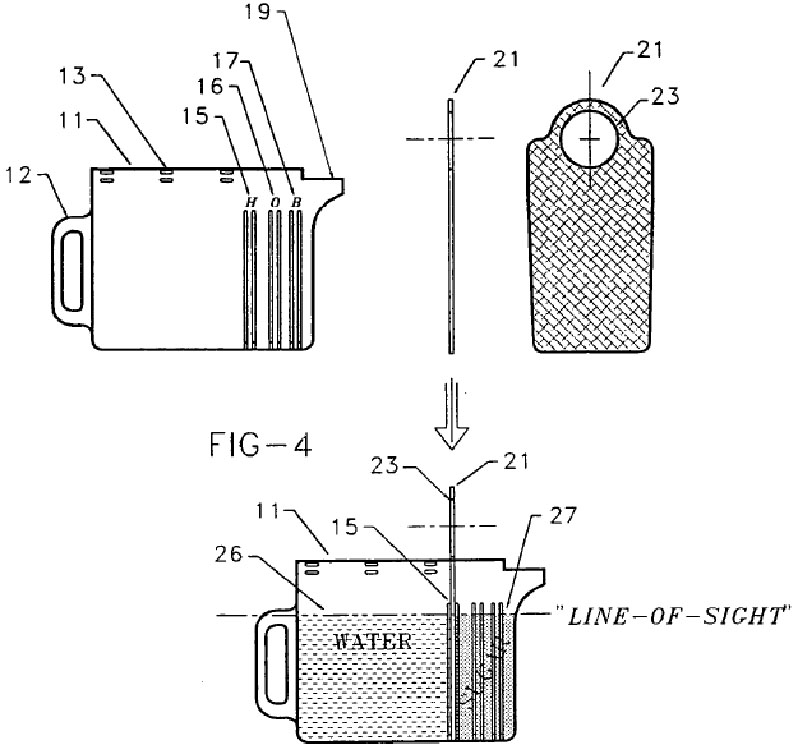
August 2011 Issue
The Federal Circuit Says
If a reference is directed to a different purpose, inventors have less motivation or occasion to consider the teachings of that reference. In re Klein, No. 10-1411 (Fed. Cir. June 6, 2011), reversed the U.S. Patent and Trademark Office’s (USPTO) Board of Patent Appeals and Interferences because the Court found that the references cited in the USPTO’s obviousness rejections were not analogous to the claimed invention. The Court reasoned that the references were not reasonably pertinent to the problem the inventor aimed to solve. In fact, the Court found that the cited references, though structurally similar, were directed to diametrically opposed purposes.
The invention at issue concerned a mixing device for use in preparation of sugar-water nectar for certain bird and butterfly feeders. As shown in the figure below, the device 11 includes a series of rails 15-17 that, when engaged with a divider 21, allow for the creation of two compartments for separating sugar and water. The rails divide the device into proportionate volumes—a first for sugar and a second for water. Once the respective compartments have been filled to the same level with sugar and water, the divider is removed, allowing the sugar and water to mix and create nectar. Placing the divider 21 within a particular rail governed the sugar-water ratio of the resultant nectar.

In the appeal before the Court, the patent applicant argued that the Board failed to identify any evidence suggesting that the applied references were “reasonably pertinent” to the problem of preparing different ratios. To be “reasonably pertinent,” a reference, even though in differing fields of endeavor, is one which, because of the matter with which it deals, logically would have commended itself to an inventor’s attention in considering his/her problem. Slip op. at 7. In addition, if a reference disclosure has the same purpose as the claimed invention, the reference relates to the same problem. Id. at 7-8. That fact supports use of that reference in an obviousness rejection. Id. at 8.
In evaluating the applicant’s arguments, the Court considered five applied references. The Court found that three of the five references disclosed devices having dividers designed to separate solid objects within the devices, as opposed to facilitate mixing of those objects. Moreover, the Court found that the dividers of the prior art devices included openings that would allow leakage of a liquid. Based on this finding, the Court concluded that the devices disclosed by these three references were not “adapted to receive water,” as required by the claims. The Court also found the other two references to be nonanalogous because neither included a movable divider to facilitate compartments having multiple ratios to one another.
Instead of instinctively amending claims in the face of rejections, In re Klein suggests that applicants should not overlook arguing the merits of rejections, especially those grounded in obviousness. Applicants should look at the purpose of prior art references to determine whether they are analogous to the claimed invention. In addition, when arguing that cited references do not constitute analogous art, applicants may consider narrowly defining the purpose of the claimed invention to limit the field of “reasonably pertinent” references. Such arguments, however, should be balanced with any potential estoppel that may flow from narrowly defining the invention’s purpose.